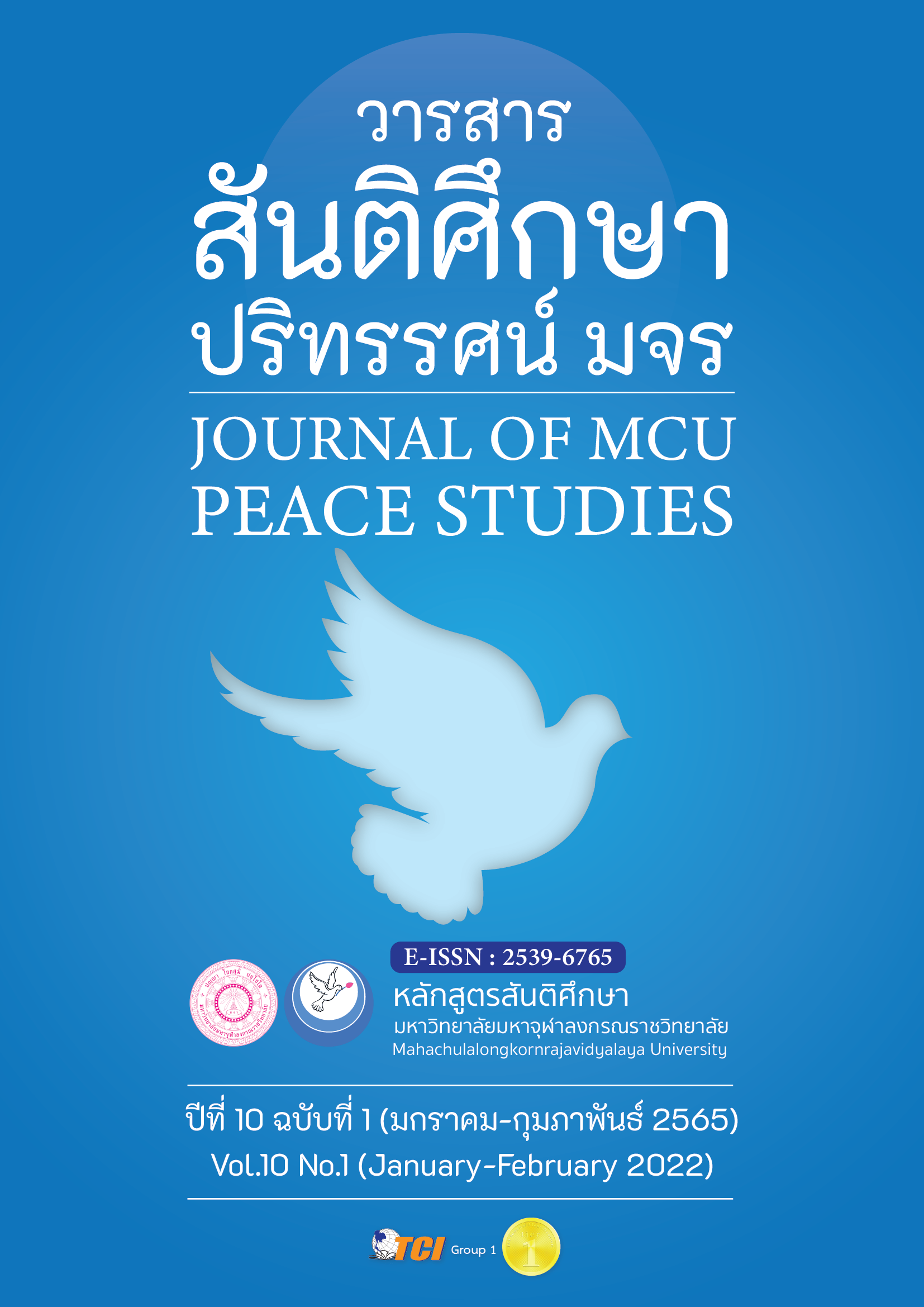The Process of Creating Palliative Care Working Flow by The Team Members based on Buddhist Peaceful Means
Main Article Content
Abstract
The good patient care should be an integrated, people-centred which include taking care of the body, mind and social aspects of a patient. In current western medicine, palliative care has been defined an approach that improves the quality of life of patients and their families facing the problem associated with life-threatening illness. It is an essential part in taking care of cancer patients, who have incurable diseases and have chances to die from their diseases. Palliative care improved the quality of life of patients and their families. In Thailand, there are efforts to integrate palliative care into the health services both in government and private sectors. However, from my experience as a palliative care doctor who works in this field for more than 15 years, there are difficulties in creating a successful palliative care program. The lack of knowledge, understanding and feeling of ownership by team members are obstacles in creating a successful program. How to overcome these is the key that I would like to explore. In this article, through my own experience, I provided a successful example of solving problems in a palliative care unit. The Buddhist peaceful means and the quality improvement process were used in creating palliative care workflow at a cancer center. As a result, the team members realized the importance and have the feeling of ownership in the palliative care workflow. This approach created harmonies in the team. I expect the reader can adapt an example model in this article and create palliative care work flow in other units.
Article Details

This work is licensed under a Creative Commons Attribution-NonCommercial-NoDerivatives 4.0 International License.
Views and opinions expressed in the articles published by The Journal of MCU Peace Studies, are of responsibility by such authors but not the editors and do not necessarily reflect those of the editors.
References
American Society for Quality. (2021). ASQ: Learn About Quality. Retrieved January 31, 2021, from https://asq.org/quality-resources/pdca-cycle.html.
Anderson, F. et al. (1996). Palliative Performance Scale (PPS): A New Tool. Journal of Palliative Care, 12(1), 5-11.
Carr, P. (2017). Achieving Peace, the End of the Part meeting minute. Nonthaburi: National Health Commission Office.
Chinda, M. et al. (2011). Reliability and validity of a Thai version of the Edmonton Symptom Assessment Scale (ESAS-Thai). Journal of Pain and Symptom Management, 42(6), 954-960.
Ferrell, B.R. et al. (2017). Integration of Palliative Care into Standard Oncology Care: American Society of Clinical Oncology Clinical Practice Guideline Update. Journal of Clinical Oncology, 36(1), 96-112.
Hussain, S.T. et al. (2016). Kurt Lewin’s process model for organizational change: The role of leadership and employee involvement: A critical review. Journal of Innovation & Knowledge, 3(3), 123-127.
Jua-upatum, R. (2021). Palliative Specialist Nurse. Interview. March, 1.
Kotter, J.P., & Cohen, D.S. (2012). The Heart of Change. New York: Harvard Business Review Press.
Lertsanguansinchai, P. et al. (2009), End of life care improving care of the dying (6th ed.). Bangkok: Aksorn Sampan.
Nakawiro, P. (2017). The Palliative Care Outcome in Palliative Cancer Patients in Phra Nakhon Si Ayutthaya Hospital. Journal of Preventive Medicine Association of Thailand, 7(1), 11-23.
National Health Commission Office. (2014). The National Strategic Plan on Health Promotion for Good Death 2014-2016. Nonthaburi: Samdee Printing Equipment Ltd.
Oken, M.M et al. (1982). Toxicity And Response Criteria of The Eastern Cooperative Oncology Group. American Journal of Clinical Oncology, 5, 649- 655.
Patthanaruangli, A. (2016). List disease of Palliative care and Functional unit. Nonthaburi: Department of Medical Services.
Phosri, T. (2021). Advanced internal medicine and surgical nurse practitioner. Interview. March, 1.
Phra Dhammapitaka (P.A.Payutto). (2002). Dictionary of Buddhism (Numerical Dhammas Edition). Bangkok: Publishing of Suetawan.
Phramaha Hansa Dhammahaso (Nitibunyakorn). (2011). Peace means: Buddhist peaceful means: The Integration of Principles and Tools for Conflict Management. Bangkok: 21 Century Ltd.
Sawasdeenarunat, V., Taneerat, A., & Wisettharn, T. (2015). The Development of a Palliative Care Model for Terminal Cancer Patients at Maharaj Nakhon Si Thammarat Hospital. Nursing Journal of the Ministry of Public Health, 25(1), 144-156.
Smith, T.J. et al. (2012). American Society of Clinical Oncology Provisional Clinical Opinion: The Integration of Palliative Care into Standard Oncology Care. Journal of Clinical Oncology, 30(8), 880–887.
Suwanvecho, B. (2021). Development of Dental services process for children based on the mission of the Police Hospital and the new-normal life under the COVID-19 situation. Advance Police Administration. Bangkok.
Temel, J.S. et al. (2010). Early palliative care for patients with metastatic non-small-cell lung cancer. N Engl J Med, 363(8), 733-742.
The International Agency for Research on Cancer (IARC), World Health Organization. (2018). Latest global cancer data: Cancer burden rises to 18.1 million new cases and 9.6 million cancer deaths in 2018: PRESS RELEASE N° 263. Retrieved September 12, 2019, from https://www.who.int/cancer/PRGlobocanFinal.pdf.
Thich Nhat Hanh (2017). The art of communicating (Tantasathien, J., Translator). Bangkok: Nation Book.
Thich Nhat Hanh. (2012). Work. California: H Parallax Press.
Watanabe, S.M., Nekolaichuk, C.L., & Beaumont, C. (2012). The Edmonton Symptom Assessment System, a proposed tool for distress screening in cancer patients: development and refinement. Psycho-Oncology, 21, 977-985.
World Health Organization. (2020). WHO Palliative Care – Key facts. Retrieved November 12, 2021, from https://www.who.int/news- room/fact-sheets/detail/palliative-care.

